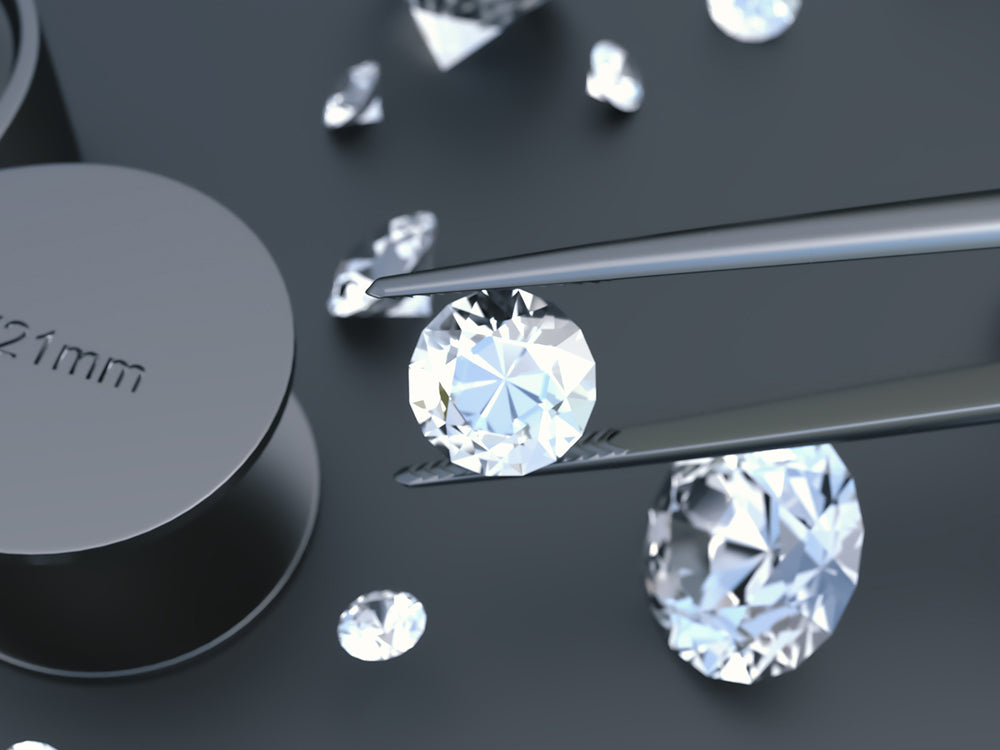A Brilliantly Simple Guide
Think of this as the CliffsNotes for the “Big Book of Everything Diamond.” You don’t need to be a gemologist to follow along! We’ll give you the highlights, explain the terminology, and a diamond education. Of course, we absolutely adore diamonds and we’d be happy to share an encyclopedia’s worth of information, but instead we’ll provide a little guidance, some important tips and the most important facts.
Diamonds are fascinating and buying one should be exciting and fun. So let’s start at the beginning.
First Things First.
You’ve found the love of your life. You’re ready to make the leap. Chances are this is your first diamond. And the first step to take is to figure out the perfect diamond shape.

SHAPE makes a difference.
The shape you choose for your center diamond will have an impact on how your ring looks and feels. And, let’s face it, the diamond is the most important part! Here’s an interesting fact: Any shape other than round is referred to as a fancy cut. Here are some things to consider when looking at various diamonds:

ROUND BRILLIANT
The most popular cut for maximum brilliance.

PRINCESS CUT
The most popular fancy-cut; has a great deal of sparkle.

OVAL
A modified brilliant-cut with similar fire; elongated shape creates the illusion of greater size.

CUSHION
A square cut with rounded corners, much like a pillow; arguably giving the most sparkle.

ASSCHER CUT
An elegant square shape with clipped corners that make diamonds appear octagonal.

EMERALD
Rectangular with parallel facets and clipped corners; produces a hall-of-mirrors effect.

MARQUISE
An elongated shape with tapering points at both ends; flatters the finger

PEAR
Teardrop-shaped, with a great deal of sparkle.

RADIANT CUT
A combination of the emerald cut and the round brilliant; typically with clipped corners.

HEART
A sentimental cut that is sometimes hard to find.
CUT – IT’S NEARLY EVERYTHING.
Ever wonder what gives a diamond its sparkle? Cut, the proportions of a diamond, is the only aspect of a diamond controlled by man. It expresses the diamond’s natural sparkle and has the biggest impact on your diamond’s appearance and quality. It’s a big deal. And that’s why we suggest you invest in exceptional cut first and foremost. We’re not saying that carat, clarity and color are unimportant, but sacrificing sparkle for a larger diamond, or one that has glaring imperfections is not the best strategy.
But in spite of the importance of cut, there weren’t any standardized criteria for cut grading before the mid 20th century. When criteria were finally standardized, it included brightness, fire, scintillation, (the sparkle) weight ratio, durability, polish and symmetry. A cutter who is working with a piece of diamond rough is trying to maximize each of these to make the diamond more rare and valuable. Needless to say, it takes a master level of craftsmanship to achieve maximum sparkle.
COLOR – LESS IS MORE.
Just because a diamond looks white doesn’t mean it’s colorless. In fact, the white diamond spectrum ranges from totally colorless to light yellow. The amount of color in a diamond is signified with a special lettering system that ranges from D to Z. The letter D is awarded only to rare, totally colorless diamonds. In other words, the more colorless a white diamond is, the greater its beauty and value.
• A colorless diamond can be graded D, E or F. Less than ¼ of 1% of all the diamonds in the world fall into this category.
• A near colorless diamond can be graded, G, H, I or J. The majority of diamonds sold in the industry are represented by one of these grades.
• Colored diamonds, such as pink, blue, chocolate or bright yellow are also available, but they are rated on a different scale than white diamonds.
CLARITY – CLEAR DIFFERENCES.
Part of the wonder of diamonds is the fact that they are created by incredible natural forces. In fact, natural diamonds are formed by tremendous heat and pressure deep within the earth. This powerful process can result in internal “inclusions” and external “blemishes.” These are simply fancy words for a diamond’s characteristics, as we like to call them. They are the diamond’s fingerprints.
A diamond’s clarity is determined by the number, size, nature and position of its inclusions and blemishes. Almost no diamond is perfect, but the closer it comes to perfection, the higher its value. A “flawless” diamond is exceptionally rare. Inclusions usually don’t affect a diamond’s beauty, although they do affect price.
Here’s an interesting diamond education fact: Like a fingerprint or snowflake, no two diamonds are the same. Stop in or contact us to learn more.
CARAT WEIGHT – NOT JUST SIZE.
Carat weight is a measure of a diamond’s weight, and a reflection of its size. So, two diamonds of slightly different dimensions may have the same carat weight. Size also depends on how evenly weight is distributed and the quality of the cut. So, two diamonds with the same carat weight can vary greatly in value, depending on the color, clarity and most importantly, the cut. It’s really a matter of deciding what matters most to you, size or quality, and then finding the best combination of size, color and clarity for your budget. By the way, there isn’t a right answer. It’s truly what’s right for you.

